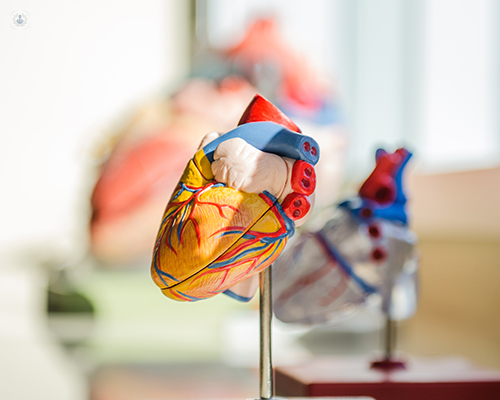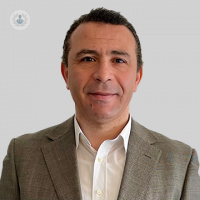Aortic aneurysm: how does it develop?
Written in association with:An aortic aneurysm is a serious medical condition where the wall of the aorta, the largest blood vessel in the body, becomes weakened and bulges outwards. This can occur in any part of the aorta, which runs from the heart down through the chest and abdomen. The bulging can lead to serious complications if it bursts or ruptures. Renowned consultant cardiologist Mr Mohamed Abdelhamid explains what an aortic aneurysm is, how it develops, and what can be done about it is crucial for anyone at risk.

How do aortic aneurysms develop?
Aortic aneurysms typically develop slowly over many years and often go unnoticed because they rarely cause symptoms until they are large or about to rupture. The exact cause of an aortic aneurysm is not always clear, but several risk factors can contribute to its development. These include high blood pressure, smoking, high cholesterol, and genetic factors. Conditions like atherosclerosis, where plaque builds up in the arteries, can also weaken the aortic wall, making an aneurysm more likely.
What are the different types of aortic aneurysms?
There are two main types of aortic aneurysms: thoracic aortic aneurysms (TAAs) and abdominal aortic aneurysms (AAAs). Thoracic aortic aneurysms occur in the part of the aorta that passes through the chest. Abdominal aortic aneurysms, on the other hand, occur in the section of the aorta that passes through the abdomen. Each type has different risk factors and potential complications. For instance, TAAs are often associated with genetic conditions such as Marfan syndrome, while AAAs are more commonly linked to lifestyle factors like smoking.
How are aortic aneurysms diagnosed?
Aortic aneurysms are often found incidentally during tests for other conditions, as they typically do not cause symptoms until they are quite large. Common diagnostic tools include ultrasound, CT scans, and MRI. These imaging techniques allow doctors to see the size and location of the aneurysm. Regular screening is particularly important for people at higher risk, such as men over 65 who have ever smoked, as early detection can significantly improve outcomes.
What treatment options are available?
The treatment for an aortic aneurysm depends on its size, location, and the overall health of the patient. Small aneurysms that are not causing symptoms may simply be monitored regularly to check if they grow. Lifestyle changes, such as quitting smoking, eating a healthy diet, and managing blood pressure, can also help prevent the aneurysm from getting worse.
For larger aneurysms, or those that are growing quickly, surgery may be required. Surgical options include open repair, where the damaged section of the aorta is replaced with a synthetic graft, and endovascular repair, a less invasive procedure where a stent graft is inserted through the arteries.
What are the potential complications?
The most serious complication of an aortic aneurysm is rupture, which can cause life-threatening internal bleeding. Symptoms of a ruptured aneurysm can include sudden, severe pain in the abdomen or back, low blood pressure, and loss of consciousness. Immediate medical attention is critical in these cases. Another possible complication is dissection, where a tear in the aorta's inner layer allows blood to flow between the layers of the aortic wall, which can also be life-threatening.
How can aortic aneurysms be prevented?
While some risk factors for aortic aneurysms, such as genetics, cannot be controlled, there are several lifestyle changes that can help reduce the risk. These include quitting smoking, maintaining a healthy blood pressure, eating a diet low in saturated fats and cholesterol, and getting regular exercise. Regular check-ups and screenings are also important, especially for those with a family history of aneurysms or other risk factors.
Aortic aneurysms are a serious condition, but with proper management and regular monitoring, many people live full and healthy lives despite their diagnosis. Understanding the risk factors, symptoms, and treatment options is key to managing this condition effectively.
If you would like to book a consultation with Mr Abdelhamid, simply visit his Top Doctors profile today.


